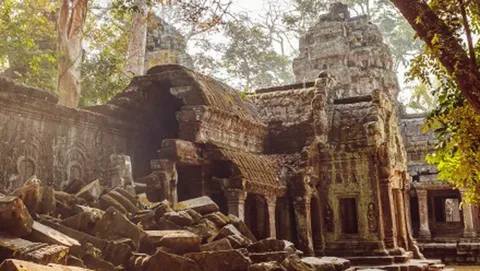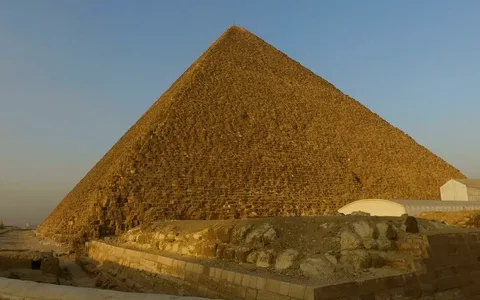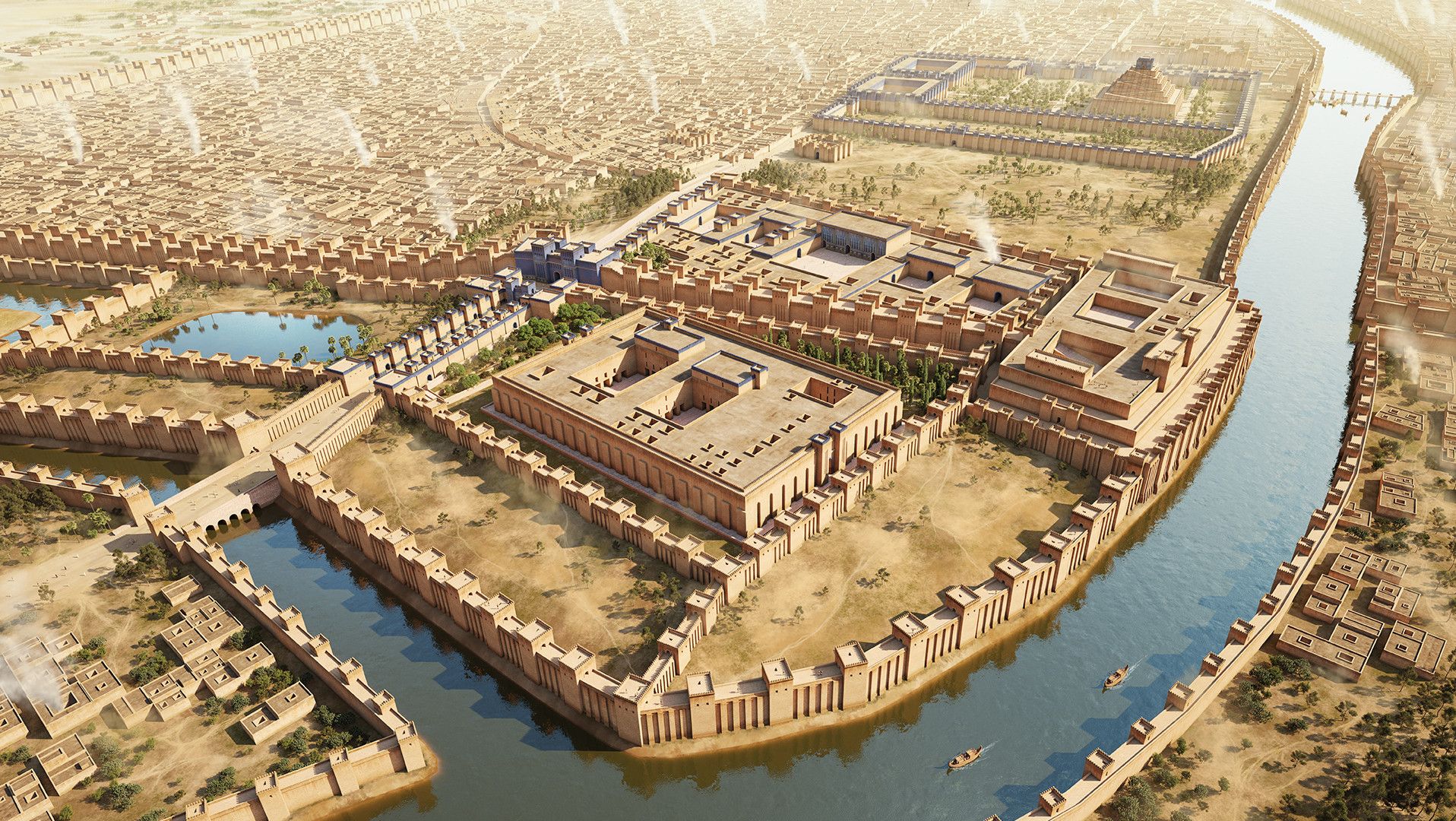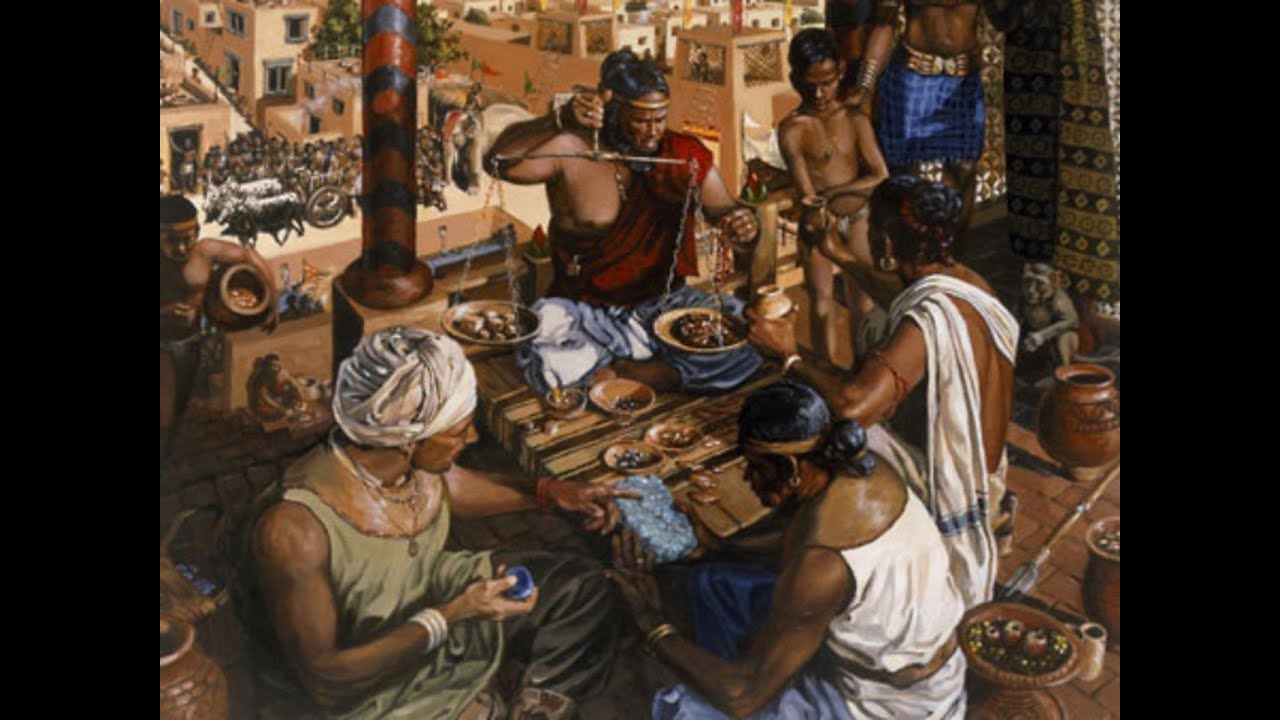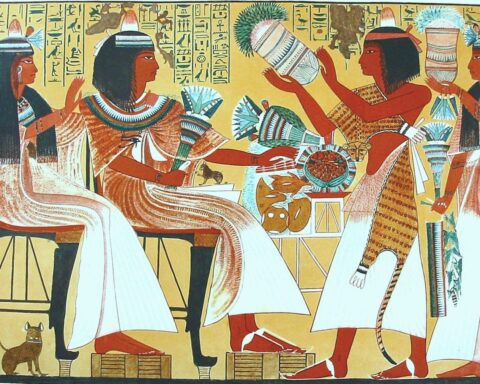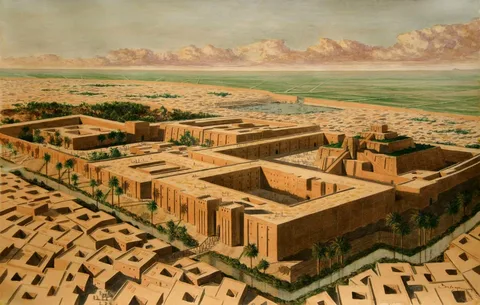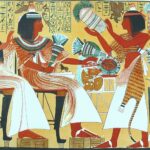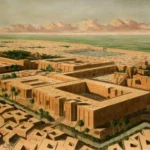Architecture and Engineering
Innovative Building Techniques: The Pyramids of Giza
Innovative building techniques have been employed by ancient civilizations for centuries, with the Pyramids of Giza being one of the most impressive examples. The Great Pyramid of Khufu, built around 2580 BC, is considered one of the greatest architectural and engineering achievements in history.
The construction of the pyramids required a high degree of planning, organization, and mathematical skill. Thousands of skilled laborers were involved in moving massive stone blocks weighing up to 2.5 tons into place using simple yet effective tools such as copper chisels and wooden mallets.
The ancient Egyptians developed innovative techniques for quarrying and transporting the limestone and granite stones used in the pyramid’s construction. They also created a sophisticated system of pulleys, levers, and ramps to move the massive stone blocks into place.
Another example of innovative building techniques can be seen in the Hanging Gardens of Babylon, one of the Seven Wonders of the Ancient World. Built by the Neo-Babylonian King Nebuchadnezzar II around 600 BC, the Hanging Gardens were a marvel of ancient engineering and architecture.
The Hanging Gardens consisted of a series of arches and vaults that supported a lush garden, complete with trees, flowers, and other vegetation. The gardens were built using a combination of brick and stone, with a complex system of canals and aqueducts to supply water to the plants.
The ancient Greeks also made significant contributions to innovative building techniques, particularly in the development of arches and vaults. The Parthenon in Athens, built around 447 BC, is an iconic example of ancient Greek architecture and engineering.
The Romans further developed and refined these techniques, building vast aqueducts, roads, and public buildings throughout their empire. Their use of concrete, a mixture of lime, water, and volcanic ash, allowed for the construction of structures that were both durable and aesthetically pleasing.
Other ancient civilizations also made significant contributions to innovative building techniques, including the Mayans, who developed advanced knowledge of astronomy and mathematics that allowed them to build sophisticated calendars and astronomical observatories.
The Egyptians also built elaborate temples and tombs, such as the Temple of Karnak in Luxor, which featured intricate carvings and sculptures. The Minoan civilization on the island of Crete built impressive palaces and city-states, such as Knossos, featuring advanced plumbing systems and public baths.
The Etruscan civilization in modern-day Italy developed innovative techniques for building elaborate tombs and temples, while the ancient Chinese built magnificent palaces and gardens, such as the Forbidden City in Beijing.
These ancient civilizations left behind a rich legacy of innovative building techniques that continue to inspire architects, engineers, and builders today. Their use of simple yet effective tools, combined with advanced mathematical and scientific knowledge, allowed them to build structures that were not only functional but also aesthetically pleasing and awe-inspiring.
From the pyramids of Giza to the Hanging Gardens of Babylon, these ancient civilizations pushed the boundaries of what was possible in building design and construction, leaving behind a lasting legacy that continues to inspire and influence modern architecture and engineering.
The ancient Egyptians’ mastery of architecture and engineering is evident in their monumental structures, particularly the pyramids of Giza.
The ancient Egyptians’ mastery of architecture and engineering is evident in their monumental structures, particularly the pyramids of Giza. These towering structures have stood the test of time for thousands of years, a testament to the ingenuity and skill of the Egyptian people.
At the heart of the pyramids’ construction lies the concept of masonry, where massive stone blocks were fitted together with precision and accuracy. The Egyptians used limestone and granite to build these structures, often transporting the heavier granite blocks from nearby quarries using simple yet effective pulleys and ramps.
The largest of the three pyramids at Giza is the Great Pyramid of Khufu, which is an astonishing 481 feet tall. It was built using over two million stone blocks, each weighing around two tons on average. The pyramid’s base is a perfect square, with each side aligning almost perfectly with the four cardinal directions – north, south, east, and west.
The precision and skill involved in building these structures are evident in their construction, particularly in the way the architects carefully planned and executed the placement of the stone blocks. The Egyptians used a system of measurement based on the cubit, which was about 52 centimeters long, to ensure that each block fit perfectly into place.
The Great Pyramid’s internal chamber is a marvel of engineering, featuring a series of narrow corridors and chambers. One of these chambers contains a sarcophagus made of granite, believed to have been used to house the pharaoh’s remains during his journey through the afterlife.
Despite being thousands of years old, the pyramids continue to inspire awe and wonder in people from all over the world. They serve as a testament to the ingenuity and skill of the ancient Egyptians, who managed to build such magnificent structures without the benefit of modern technology or tools.
The pyramids’ enduring legacy has sparked interest and debate among historians, archaeologists, and engineers, who continue to study their construction with great fascination. Their construction is a reminder that even in ancient times, humans were capable of achieving greatness through teamwork, determination, and a deep understanding of architecture and engineering principles.
Mesopotamian Cities: Advanced Urban Planning
The ancient Mesopotamian cities are renowned for their sophisticated urban planning, which showcased the advanced technological and engineering skills of their inhabitants. These cities were not just mere settlements but carefully designed and constructed metropolises that served as centers of governance, commerce, and culture.
The most notable examples of Mesopotamian cities with remarkable urban planning include Uruk, Babylon, Ur, Nippur, and Nineveh. Each of these cities had its unique characteristics, but they shared a common thread – the presence of advanced engineering and architectural features that facilitated the development of complex societies.
One of the most impressive aspects of Mesopotamian urban planning was the use of city walls for defense and organization. The city walls not only protected the inhabitants from external threats but also helped to demarcate different districts within the city, such as residential areas, markets, temples, and palaces.
Another remarkable feature of Mesopotamian cities was the presence of sophisticated irrigation systems that enabled the growth of crops in arid regions. The Sumerians developed a complex network of canals, dams, and reservoirs to control the flow of water, ensuring a stable food supply for the population.
The use of advanced mathematics and astronomy in Mesopotamian urban planning is also noteworthy. The ancient Mesopotamians used their knowledge of geometry and trigonometry to design and build monumental structures such as temples, palaces, and ziggurats. They also developed a sophisticated system of time-keeping that allowed them to track the movements of celestial bodies with great accuracy.
The planning of Mesopotamian cities was often influenced by their religious and cultural practices. For example, the construction of temples and ziggurats served not only as symbols of divine power but also as centers of worship and social gatherings. These structures were typically located in the heart of the city, near the royal palaces and government buildings.
Furthermore, the urban planning of Mesopotamian cities was often designed to promote economic growth and trade. The presence of marketplaces, warehouses, and trading posts facilitated the exchange of goods and commodities between different regions and cultures. The ancient Mesopotamians also developed a system of weights and measures that standardized trade practices across the region.
Despite their many achievements, the urban planning of Mesopotamian cities was not without its challenges. The scarcity of resources, such as water and food, often led to conflicts between different city-states and social groups. Additionally, the environmental degradation caused by the construction of large-scale irrigation systems and deforestation had significant consequences for the long-term sustainability of these civilizations.
However, the legacy of Mesopotamian urban planning continues to inspire architects, engineers, and policymakers today. The sophisticated use of advanced technologies and mathematical concepts to design and build complex societies remains a testament to the ingenuity and creativity of our ancient ancestors.
The Sumerians, Akkadians, Babylonians, and Assyrians developed sophisticated cities with advanced irrigation systems, temples, and palaces.
The ancient civilizations of Mesopotamia, which includes the Sumerians, Akkadians, Babylonians, and Assyrians, played a significant role in shaping human history. One of their most impressive achievements was the development of sophisticated cities that showcased advanced irrigation systems, temples, and palaces.
These civilizations flourished in the fertile plain between the Tigris and Euphrates rivers in modern-day Iraq, where they created some of the world’s first urban centers. The Sumerians, who are often credited with being the first civilization to develop a written language, built cities such as Ur and Uruk that featured advanced irrigation systems, which allowed them to cultivate crops in the fertile plain.
One of the most impressive examples of Sumerian urban planning is the city of Babylon, which was founded by the Akkadians. The city was famous for its hanging gardens, one of the Seven Wonders of the Ancient World, and its advanced irrigation system allowed it to support a large population. The Akkadians also built temples, such as the temple of Ishtar at Babylon, that featured intricate carvings and sculptures.
The Babylonians, who took over from the Akkadians, developed even more sophisticated cities with advanced irrigation systems and monumental architecture. Their capital city, Babylon, was a testament to their engineering prowess, featuring the famous Ishtar Gate and the Temple of Marduk. The city’s advanced irrigation system allowed it to support a large population and featured canals, bridges, and waterwheels that were powered by the Euphrates River.
The Assyrians, who took over from the Babylonians, developed even more sophisticated cities with advanced irrigation systems and monumental architecture. Their capital city, Nineveh, was one of the largest cities in the ancient world and featured a complex system of canals, bridges, and waterwheels that were powered by the Tigris River.
In terms of palaces, the Sumerians built some of the most impressive examples of ancient Mesopotamian architecture. The Royal Palace at Ur, for example, was built around 2100 BC and featured intricate carvings and sculptures on its walls. The palace also had a sophisticated system of drainage, which suggests that the Sumerians were familiar with advanced engineering techniques.
The Babylonians also built some impressive palaces, including the Palace of Nebuchadnezzar at Babylon, which was built in the 6th century BC. The palace featured intricate carvings and sculptures on its walls, as well as a sophisticated system of drainage that suggests that the Babylonians were familiar with advanced engineering techniques.
Overall, the Sumerians, Akkadians, Babylonians, and Assyrians developed some of the most impressive cities in human history, with advanced irrigation systems, temples, and palaces. Their achievements continue to inspire awe and admiration today, and their legacy can be seen in the many ancient cities that still stand in Mesopotamia.
Mathematics and Astronomy
The Maya’s Calendar System: A Precise Timekeeper
The Maya civilization was renowned for its sophisticated calendar system, which remains one of the most precise timekeeping systems ever developed by a ancient culture. This complex system consisted of multiple interlocking calendars that tracked various cycles and periods.
The core of the Maya calendar system was divided into three main components: the Tzolk’in, the Haab, and the Long Count. The Tzolk’in was a 260-day cycle that measured the days from one solar zenith to another, used for divination and spiritual practices. It consisted of twenty day signs, each associated with specific qualities and attributes.
The Haab calendar, on the other hand, was a 365-day solar year-based system, divided into eighteen months of twenty days each, with an additional five days at the end. This calendar tracked the cycles of agriculture, trade, and seasonal changes.
The Long Count calendar measured time in units of Baktun (144,000 days or approximately 394 years), Katun (7,200 days), Tun (360 days), Winal (20 days), and K’in (one day). This system allowed the Maya to track vast periods of time with remarkable precision.
The Maya calendar was also deeply connected to astronomy, with many of their calendars aligned with celestial events such as solar and lunar eclipses. They accurately predicted these events centuries in advance, demonstrating a sophisticated understanding of astronomical phenomena.
One of the most remarkable aspects of the Maya calendar system is its ability to predict specific dates and events far into the future. For instance, the famous “Prophecy Stone” at Chichen Itza was used to calculate the exact date of the winter solstice in 2012, sparking widespread interest and speculation about a potential apocalypse.
The precision and accuracy of the Maya calendar system have been extensively studied by modern scholars, who continue to be amazed by the ingenuity and mathematical sophistication of the ancient Maya. Despite being developed centuries ago, this remarkable system remains a testament to the ingenuity and cultural achievements of one of the world’s most impressive civilizations.
The ancient Mayans’ calendar was a complex system of interlocking calendars that accurately tracked time and astronomical events.
The ancient Mayans’ calendar was a complex system of interlocking calendars that accurately tracked time and astronomical events, allowing them to make precise predictions about celestial movements and planetary alignments. The Mayan calendar consisted of three main types: the Tzolkin, the Haab, and the Long Count.
The Tzolkin was a 260-day calendar that was used for divination and ritual purposes. It was composed of 20 days x 13 numbers, which together created a unique set of combinations known as a “day sign”. Each day sign had its own distinct meaning and significance.
The Haab was a 365-day solar calendar that was used to track the seasons and agricultural cycles. It was divided into 18 months of 20 days each, with an additional five days at the end known as “Uayeb”, which were considered to be outside of the regular cycle.
The Long Count was a system of measuring time in units of 20 cycles of the Tzolkin and Haab calendars combined. It measured time in a series of increasing units, starting with the Baktun (144,000 days), followed by the Katun (7,200 days), the Tun (360 days), the Winal (20 days), and finally the K’in (one day).
The Mayan calendar was not just a tool for tracking time but also had spiritual significance. It was believed to hold the secrets of creation and the cyclical nature of time. The Mayans believed that time was divided into epochs, each with its own distinct characteristics and energies.
One of the most notable features of the Mayan calendar is its ability to predict astronomical events with great accuracy. For example, the Mayans were able to predict solar eclipses and planetary alignments with a high degree of precision. This demonstrates their advanced understanding of astronomy and mathematics.
The Mayan calendar has also been linked to the concept of precession, which refers to the gradual shift of the Earth’s axis over a period of time. The Mayans believed that this precession was responsible for the changing of the ages, or the transition from one epoch to another.
Despite its complexity and sophistication, the Mayan calendar is often misunderstood or misrepresented in popular culture. Many people believe that the Mayan calendar predicted the end of the world, which is a misconception. In reality, the Mayans saw time as cyclical, with events repeating themselves over and over again.
The Mayan calendar remains an important and fascinating aspect of ancient Maya culture and civilization. Its complexity and sophistication demonstrate the advanced knowledge and understanding of the Mayans in areas such as astronomy, mathematics, and spirituality.
Mathematical Discoveries of the Babylonians
The Babylonians were one of the most ancient civilizations known to human history, with their major contributions extending across various fields including mathematics. Despite being a long-lost civilization, their mathematical discoveries had far-reaching impacts and have continued to shape modern-day understanding of arithmetic, algebra, and geometry.
One notable achievement by the Babylonians was the development of a sexagesimal (base-60) number system, which included a place-value system similar to the decimal system used today. The sexagesimal system enabled them to perform complex calculations with relative ease, such as dividing numbers, finding roots, and solving equations.
In addition to their number system, the Babylonians also made significant contributions to algebraic methods for solving quadratic equations. They were able to express mathematical relationships using linear and quadratic equations, often with two variables and one unknown quantity. Their methods of solution involved substitution, elimination, and factoring techniques that remain relevant in modern-day mathematics.
Further, the Babylonians demonstrated a sophisticated understanding of geometric principles by developing the concept of similar triangles, which they used to solve various types of problems involving lengths, angles, and proportions. This led them to develop approximate values for mathematical constants like π (pi) as well.
The YBC 7289 tablet is one example of their impressive knowledge in this area. Discovered by archaeologist Otto Neugebauer in the early 1900s, the clay tablet features a series of geometric calculations that demonstrate an understanding of basic algebra and geometry far more advanced than any other ancient civilization.
The Babylonians’ most remarkable mathematical achievement lies in their work on plane figures – triangles, squares, circles – where they developed formulas for areas, perimeters, and volumes. By approximating the value of π, the circumference and area of circles could be calculated with a reasonable degree of accuracy, considering that mathematics at this time had yet to develop calculus.
Moreover, in their sexagesimal system, Babylonian mathematicians made an error when calculating the length of the circle’s radius, leading them to conclude that π was approximately 3.125 (or 25/8), though they actually obtained an accurate approximation for the area and circumference using 3.07 (or 7/9) as their value.
This work represents a milestone in the development of mathematics and laid a solid foundation for the further study of geometry, algebraic equations, and calculus. The sexagesimal system itself continued to be used for over three millennia and is still utilized today in the form of timekeeping (60 seconds = 1 minute, 60 minutes = 1 hour).
The Babylonians made significant contributions to mathematics, including the development of arithmetic, geometry, and algebraic methods.
The Babylonians were a highly advanced civilization that lived in Mesopotamia, which is now modern-day Iraq, from around 1800 to 539 BCE. They made significant contributions to mathematics, including the development of arithmetic, geometry, and algebraic methods.
One of the most notable achievements of the Babylonians was their system of arithmetic, which was based on a sexagesimal (base-60) number system. This system included the concept of zero as a placeholder, allowing for more accurate calculations and representations of numbers.
The Babylonians also developed geometric methods to solve problems involving shapes and proportions. They were able to calculate areas and volumes of various objects using formulas that are still used today, such as the formula for the area of a circle (A = πr^2).
In addition to these contributions, the Babylonians developed algebraic methods to solve equations involving unknown quantities. They were able to use symbols and rules to manipulate equations and find solutions.
The Babylonian mathematicians also made significant advances in the field of trigonometry, which is the study of triangles and their properties. They were able to calculate the areas and heights of triangles using trigonometric methods that are still used today.
Furthermore, the Babylonians developed a system of mathematical notation and terminology that was widely adopted throughout the ancient world. Their use of symbols and abbreviations allowed for more efficient communication and calculation of mathematical problems.
The Babylonian contribution to mathematics can be seen in many areas, including architecture, engineering, and astronomy. They were able to design buildings and structures using geometric methods, calculate the trajectories of celestial bodies using algebraic methods, and develop calendars using arithmetic and trigonometric methods.
In conclusion, the Babylonians made significant contributions to mathematics that had a lasting impact on the development of mathematical knowledge throughout history. Their advances in arithmetic, geometry, algebra, and trigonometry paved the way for future civilizations to build upon their discoveries and continue to advance mathematical understanding.
Art and Symbolism
The Iconic Sphinx of Giza: A Mysterious Emblem
The iconic Sphinx of Giza is one of the most fascinating and enduring symbols of ancient Egypt, captivating the imagination of people for centuries. Carved out of a single block of limestone, this enigmatic creature has been shrouded in mystery, sparking intense debate among historians, archaeologists, and enthusiasts alike.
Located on the west bank of the Nile River, near the Pyramids of Giza, the Sphinx is believed to have been built during the Old Kingdom period, specifically during the reign of Pharaoh Khafre (2520-2494 BCE). Its origins are steeped in myth and legend, with various theories attempting to explain its construction and purpose.
The Sphinx is depicted as a humanoid creature with the body of a lion, symbolizing power, strength, and courage. The pharaonic head atop the feline body represents wisdom, royalty, and divine authority. This juxtaposition of two seemingly disparate animals may have been intended to convey a sense of unity between human and animal, or possibly even to represent the fusion of earthly and heavenly realms.
One of the most enduring theories surrounding the Sphinx is its alleged purpose as a guardian of the pyramids and the pharaoh’s tomb. According to this notion, the creature was tasked with protecting the dead Pharaoh from potential intruders or grave robbers. The Sphinx may have also served as a symbol of the pharaonic dynasty’s power and dominance over the land.
The construction of the Sphinx is equally impressive and mysterious. The massive stone block, weighing an estimated 200 tons, was carved out using copper tools and simple quarrying techniques. Despite being exposed to the elements for millennia, the Sphinx remains remarkably well-preserved, with only minor signs of erosion.
Over the centuries, the Sphinx has been the subject of various restorations and excavations. In the early 20th century, Egyptian authorities undertook a major restoration project aimed at preserving the monument and returning it to its original state. More recent efforts have focused on uncovering hidden details and shedding new light on the enigmatic creature.
The Sphinx has had a profound impact on art, literature, and popular culture throughout history. From ancient Greek and Roman sculptures to modern-day depictions in film and advertising, this iconic symbol continues to inspire awe and fascination. Its enduring mystique lies in its ability to evoke emotions and spark the imagination, making it an integral part of human collective consciousness.
The Great Sphinx is a majestic stone creature with the body of a lion and the head of a human, representing the power and wisdom of ancient Egyptian pharaohs.
The Great Sphinx is an iconic monument located near the city of Giza, Egypt, and it is considered one of the most mysterious and awe-inspiring structures from ancient times.
This magnificent creature stands approximately 240 feet (73 meters) long and 66 feet (20 meters) high, with the body of a lion and the head of a human, which is believed to be a representation of Pharaoh Khafre, who ruled Egypt from 2520 to 2494 BCE.
The Sphinx was carved out of a single block of limestone during the Old Kingdom period, specifically during the reign of Pharaoh Khafre, and it is believed that it was originally covered in smooth white limestone and had a gleaming red granite collar around its neck.
The face of the Sphinx is thought to be that of the pharaoh himself, while some scholars believe it may represent one of his nobles or an important member of society.
The body of the Sphinx is depicted as that of a lion, which was revered in ancient Egyptian culture for its strength and power, representing the pharaoh’s dominion over the land and its inhabitants.
Over time, erosion has worn away much of the original limestone exterior, revealing the underlying bedrock beneath, but despite this degradation, the Sphinx remains one of the most impressive examples of ancient Egyptian architecture and artistry.
The Great Sphinx is often seen as a symbol of wisdom, power, and mystery, reflecting the complex nature of the pharaohs who built it.
Its construction is thought to have required a massive workforce, possibly tens of thousands of laborers, who spent years quarrying, transporting, and placing the stones into their final positions.
The Great Sphinx has become an iconic representation of ancient Egyptian culture and remains one of the most recognizable landmarks from that time period, fascinating people for centuries with its grandeur and mystique.
Buddhist Art: The Story of the Mahabharata
Buddhist Art often weaves the story of the Mahabharata, an ancient Indian epic, into its intricate tapestry. The Mahabharata is one of the two major Sanskrit epics of ancient India, the other being the Ramayana. It narrates the story of a great struggle between good and evil in which Prince Arjuna plays a central role.
The Buddhist adaptation of this epic transforms the original narrative by emphasizing key themes such as impermanence and the path to enlightenment. The art depicts scenes from the Mahabharata, often showing Arjuna’s dilemma on the battlefield of Kurukshetra, where he is forced to choose between fighting against his family members and upholding his duty as a warrior.
The representation of Arjuna in Buddhist art reflects his inner conflict and serves as a metaphor for the human struggle with morality. This portrayal also underscores the significance of mindfulness and self-reflection in making ethical decisions, key tenets of Buddhism.
Another aspect of Buddhist Art featuring the Mahabharata story is its depiction of the Kurukshetra War, a pivotal event in the epic. This war serves as a backdrop to Arjuna’s crisis and his eventual understanding of the transience of life and the importance of spiritual growth.
The art also explores other themes from the Mahabharata, such as the role of destiny versus human agency and the significance of dharma, or right living. By incorporating these themes, Buddhist artists aim to convey the profound insights into human nature and the path to enlightenment that are central to Buddhism.
Buddhist Art is characterized by its use of symbolism and imagery from the Mahabharata to convey spiritual truths and moral lessons. Through its depictions of key events and characters, the art offers a visual narrative of the epic story while also conveying Buddhist teachings on compassion, wisdom, and the pursuit of enlightenment.
The connection between Buddhist Art and the Mahabharata is not limited to visual representations but extends to themes and ideas. The story serves as a framework for exploring universal human concerns and experiences, which are central to both Buddhist teachings and Indian culture.
The enduring influence of the Mahabharata on Buddhist Art reflects its continued relevance in contemporary society. By engaging with the epic’s timeless themes and motifs, Buddhist artists can create works that resonate with diverse audiences while also conveying the profound wisdom of Buddhism.
The narrative potential of the Mahabharata in Buddhist Art is a testament to the power of storytelling in art and culture. By weaving this ancient epic into its fabric, Buddhist art offers a rich tapestry of spiritual insights, moral lessons, and artistic expression that continues to inspire audiences around the world.
Politics and Governance
The Code of Hammurabi: A Precursor to Law Codes
The Code of Hammurabi, discovered in the 19th century, is one of the most significant and well-preserved ancient law codes in existence. It dates back to around 1754 BCE during the reign of Hammurabi, the sixth king of the First Dynasty of Babylon.
Credited as a precursor to modern-day law codes, The Code of Hammurabi consists of 282 laws that cover various aspects of Babylonian society, including marriage, family, property, and crime. The code is inscribed on a seven-foot tall diorite stele, or stone slab.
One of the most remarkable features of The Code of Hammurabi is its emphasis on personal responsibility and justice. Unlike earlier law codes that focused solely on royal decrees, this one places equal importance on both the victim’s right to compensation and the perpetrator’s need for punishment.
The code also demonstrates an understanding of the social hierarchy of Babylonian society, with laws governing relationships between the wealthy elite, merchants, artisans, and laborers. For example:
- Laws regulating marriage, divorce, and inheritance show that women had rights but were largely subordinate to men.
- Codes outlining punishments for theft, murder, and other crimes indicate a growing concern with property rights and the administration of justice.
- Rules governing economic transactions, including trade and commerce, suggest an increasingly complex economy that required regulation.
The Code of Hammurabi is significant not only because of its historical importance but also for its influence on subsequent law codes. Many ancient civilizations drew inspiration from Babylon’s example:
- Egypt: The Edfu temple inscriptions, dated around 200 BCE, contain a collection of laws and regulations.
- Assyria: The Middle Assyrian Laws (circa 1075-1050 BCE) show clear influences from Hammurabi’s code.
- Greece: The Athenian law codes, developed around the 4th century BCE, demonstrate similarities with Babylonian laws on issues like inheritance and marriage.
Although its origins and authenticity were initially disputed, archaeologists today widely agree that the Code of Hammurabi is a genuine artifact from ancient Mesopotamia. This remarkable document not only provides insight into the social, economic, and cultural norms of Babylonian society but also serves as an essential precursor to modern law codes.
Today, visitors can view The Code of Hammurabi at the Louvre Museum in Paris, where it is considered one of the museum’s most prized possessions. This ancient relic stands as a testament to human ingenuity and our enduring quest for justice and order.
The Babylonian king Hammurabi created a comprehensive code of laws that protected the rights of citizens and established a fair system of justice.
The Babylonian king Hammurabi, who ruled from approximately 1792 to 1750 BCE, is renowned for creating the Code of Hammurabi, one of the earliest surviving examples of written laws. This comprehensive code protected the rights of citizens and established a fair system of justice in ancient Babylon.
One of the most remarkable aspects of the Code of Hammurabi is its emphasis on social justice. For example, it protected the rights of women and slaves by prohibiting their owners from causing them harm or treating them unjustly. This was a significant departure from the common practices of other ancient civilizations, where women and slaves often faced brutal treatment.
The code also established clear punishments for crimes, which were designed to fit the severity of the offense. For instance, if someone stole an item worth one shekel, they would have their hand cut off as punishment. However, the punishments became increasingly severe with more serious offenses.
In addition to its focus on social justice and punishment, the Code of Hammurabi also demonstrated a strong sense of morality and compassion. It included provisions for protecting orphans, widows, and the poor, who were often vulnerable in ancient societies. This emphasis on caring for those in need highlights the importance that Hammurabi placed on creating a fair and just society.
The Code of Hammurabi had far-reaching impacts beyond Babylon itself. Its influence can be seen in later legal codes, such as those developed by the Greeks and Romans, which often borrowed from or adapted Hammurabi’s principles. This demonstrates the enduring legacy of this ancient code, which remains an important part of our understanding of justice and morality.
Today, the Code of Hammurabi serves as a fascinating glimpse into the values and practices of ancient societies. It continues to be studied by scholars and historians around the world, offering insights into the development of law, social justice, and human rights. By examining this remarkable code, we can gain a deeper understanding of our shared human experiences and the enduring importance of creating fair and just systems of governance.
Ancient Chinese Imperial System: A Hierarchical Structure
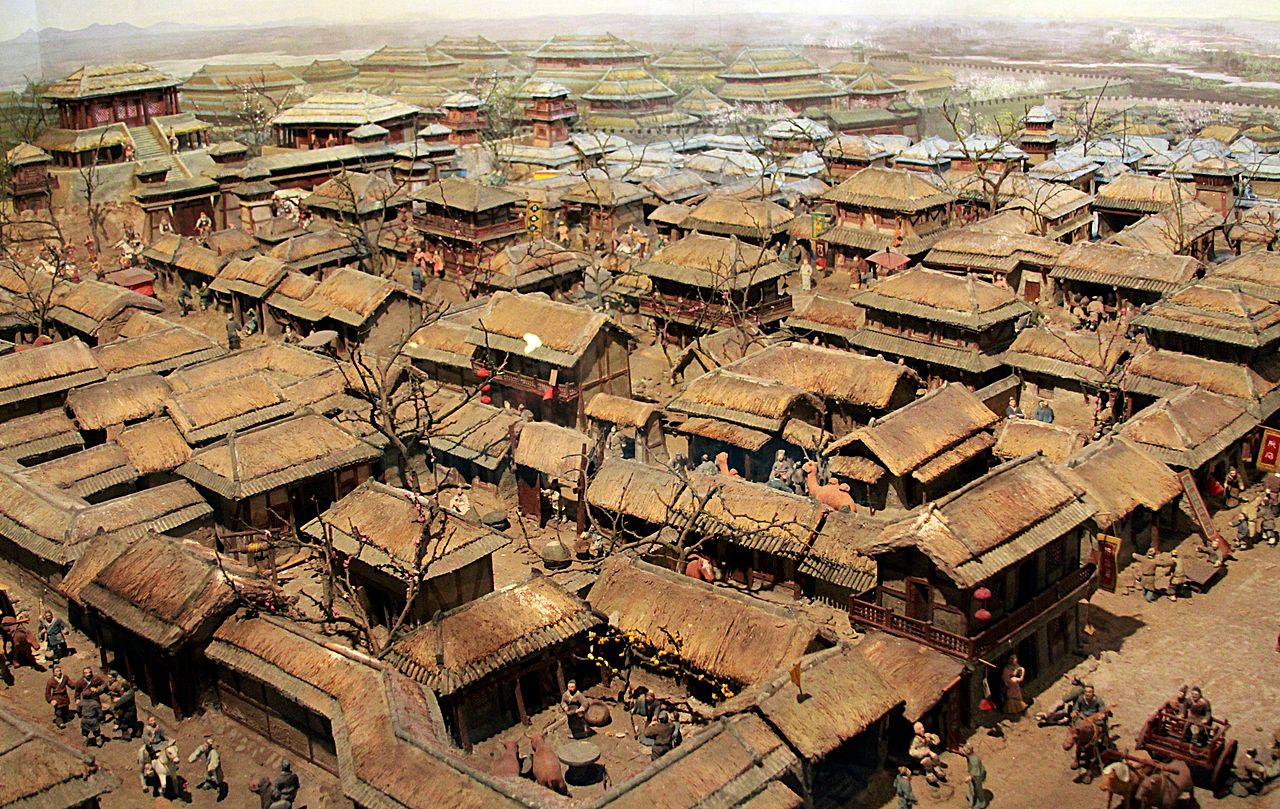
The Ancient Chinese Imperial System was a hierarchical structure that played a significant role in the governance of China for over two millennia. This system, also known as the “Mandate of Heaven,” was based on a complex set of relationships between the ruler, officials, and subjects, with each group having specific roles and responsibilities.
At the top of this hierarchical structure was the Emperor, who held absolute power and was considered to be divine. The Emperor was responsible for maintaining the Mandate of Heaven, which was believed to grant legitimacy to his rule. He was also responsible for governing the country through a network of officials and administrators.
Beneath the Emperor were the Wang, or nobles, who held high-ranking positions in the government and aristocracy. These individuals often served as governors of provinces and commanders of military forces. The wang class was divided into several tiers, with the highest-ranking nobles holding greater influence and power.
Below the nobility were the scholar-officials, who held positions in government and administration based on their educational background and abilities. These individuals were responsible for implementing policies and decisions made by the Emperor and nobles, as well as providing advice and counsel to those in power.
The next level in this hierarchical structure was the shih, or common people, who formed the backbone of Chinese society. This class included farmers, artisans, merchants, and laborers, all of whom were subject to the rules and regulations of the imperial system.
Beneath the common people were the serfs and peasants, who formed a large and marginalized group within Chinese society. These individuals were often bound to the land they worked on and were required to provide labor and services to their lords in exchange for protection and housing.
The Ancient Chinese Imperial System was characterized by its rigid social hierarchy, with each class having specific roles and responsibilities. This system played a significant role in shaping Chinese society and culture, and its influence can still be seen today in the country’s politics, economy, and social structures.
Trade and Commerce
The Indus Valley Civilization’s Merchant Guilds
The Indus Valley Civilization was a sophisticated urban civilization that flourished around 4300-1300 BCE in the Indus Valley region of modern-day Pakistan and northwestern India.
One of the most notable features of this civilization is its extensive system of merchant guilds, which played a vital role in the economic and cultural development of the society.
The Indus Valley Civilization was known for its advanced system of trade and commerce, with merchants playing a crucial role in exchanging goods such as textiles, metals, and food products across vast distances.
The merchant guilds were organized into complex networks, with each guild specializing in specific types of goods or services.
The guilds operated independently, but also worked closely together to ensure the smooth operation of trade within the region.
Each guild had its own distinct culture and identity, shaped by factors such as geography, language, and customs.
Archaeologists have uncovered evidence of these merchant guilds in the form of inscriptions on pottery, seals, and other artifacts found at Indus Valley sites. These inscriptions provide valuable insights into the social organization, trade networks, and economic systems of the civilization.
The guilds also played a significant role in shaping the cultural practices of the Indus Valley Civilization, with evidence suggesting that they were responsible for developing and maintaining complex systems of art and architecture.
The Indus Valley Civilization’s merchant guilds are an important reminder of the complexity and sophistication of ancient civilizations, and their contributions to the development of modern societies cannot be overstated.
Despite being one of the earliest urban civilizations in human history, the Indus Valley Civilization’s legacy has had a lasting impact on the cultures that followed it.
The people of MohenjoDaro and Harappa engaged in extensive trade networks, exchanging goods such as textiles, spices, and metals.
The people of Mohenjo-Daro and Harappa, two ancient civilizations located in modern-day Pakistan, were renowned for their extensive trade networks that spanned across vast distances. These networks facilitated the exchange of various goods, including textiles, which were highly prized for their quality and intricate designs.
The Mohenjo-Daro and Harappa traders engaged in a thriving business, exchanging goods such as spices, which were considered essential commodities, alongside precious metals like copper and bronze. These trade networks not only facilitated economic growth but also contributed significantly to the cultural exchange between these civilizations.
The Mohenjo-Daro and Harappa traders’ extensive trade networks suggest a high level of sophistication and organization. They were able to transport goods over long distances, often through treacherous terrain, using advanced transportation systems such as boats and caravans. The goods exchanged through these networks not only included luxury items like textiles and spices but also essential commodities necessary for the daily lives of their people.
The exchange of goods between Mohenjo-Daro and Harappa had far-reaching consequences. It facilitated cultural exchange, which enriched the societies involved by introducing new ideas, customs, and technologies. The trade networks also helped to establish a common language, which facilitated communication among the traders and merchants. This, in turn, contributed to the growth of these civilizations.
The extensive trade networks of Mohenjo-Daro and Harappa are a testament to their advanced organizational skills and their ability to adapt to changing circumstances. Their success in establishing trade relationships with neighboring cities and towns demonstrates their capacity for cooperation and collaboration.
The legacy of the Mohenjo-Daro and Harappa civilizations can still be seen today in the rich cultural heritage they left behind. The remnants of their advanced urban planning, architecture, and engineering skills have inspired architects and engineers for centuries. Their trade networks also played a significant role in shaping the course of human history.
The study of Mohenjo-Daro and Harappa civilizations offers valuable insights into the lives of our ancestors. By examining the remnants of their societies, we can gain a deeper understanding of how they lived, what challenges they faced, and how they overcame them. This knowledge provides us with a unique perspective on human history and highlights the importance of cultural exchange and cooperation in shaping our world.
The Mohenjo-Daro and Harappa civilizations are a powerful reminder of the achievements of ancient cultures and their contributions to modern society. Their extensive trade networks, advanced urban planning, and sophisticated engineering skills demonstrate the ingenuity and resilience of our ancestors. By studying these civilizations, we can gain a deeper appreciation for the rich cultural heritage that has been passed down to us.
The Silk Road: A Network of Merchants and Caravans
The Silk Road was a vast network of trade routes that connected the East and West, stretching over 4,000 miles from China to the Mediterranean region. It was established during the Han Dynasty (206 BCE – 220 CE) and played a crucial role in facilitating the exchange of goods, ideas, and cultures between different civilizations.
The Silk Road got its name from the lucrative silk trade that flourished along it. Chinese silk was highly prized by European consumers, and it became a major commodity traded on this network. However, the Silk Road carried much more than just silk; it transported spices, precious stones, metals, tea, and other valuable goods.
The merchants and traders who traveled on the Silk Road were primarily Muslims, Chinese, Indians, Persians, and Greeks. These groups came together at various oases and trade centers along the route to exchange their wares. The Silk Road was not a single road but rather a network of routes that crisscrossed across deserts, mountains, and rivers.
The caravans that traversed the Silk Road were impressive in scale and complexity. They often consisted of hundreds of camels, horses, or donkeys loaded with goods, accompanied by guards, cooks, and other support staff. These caravans traveled at a slow pace, typically around 20 miles per day, to ensure the safe passage of their valuable cargo.
The Silk Road had a profound impact on world history. It facilitated cultural exchange between East and West, introducing new ideas, technologies, and artistic styles to different regions. Buddhist and Christian missionaries used the Silk Road to spread their teachings, while Chinese scholars and travelers brought back knowledge from abroad.
The legacy of the Silk Road can be seen in its influence on modern-day international trade and commerce. The concept of globalization has its roots in the Silk Road’s success as a network for exchanging goods and ideas across vast distances. Today, container ships, planes, and computers have replaced camels and caravans, but the basic principles of global trade remain the same.
In conclusion, the Silk Road was an extraordinary achievement in human history that showcased our capacity to connect different civilizations and cultures through trade and exchange. Its legacy continues to inspire new generations of entrepreneurs, traders, and travelers as we strive for greater understanding and cooperation across the world.
Culture and Legacy
The Olympic Games of Ancient Greece: A Celebration of Sportsmanship
The Olympic Games of Ancient Greece were a grand celebration that brought together the best athletes from across the Greek city-states to compete in various sports and disciplines. The games were a testament to the enduring power of sportsmanship, where individuals from diverse backgrounds came together to showcase their skills and push the boundaries of human achievement.
The origins of the Olympic Games date back to ancient times, with the first recorded games taking place in 776 BC in Olympia, Greece. According to legend, the games were established by Zeus himself, who decreed that every four years the people of Elis would hold a festival in honor of his son, Hercules.
The games were an essential part of the ancient Greek calendar and were held for over 1,000 years until they were banned by the Roman Emperor Theodosius in 393 AD. During this time, athletes competed in numerous sports, including running, wrestling, boxing, chariot racing, and the pentathlon – a five-event competition that consisted of running, jumping, wrestling, discus throw, and javelin.
The Olympic Games were not only about athletic achievement but also about demonstrating courage, strength, and skill. Athletes were revered for their prowess on the field, and winners were showered with gifts, honors, and prestige.
However, it wasn’t just the athletes who were celebrated; the Olympic Games also provided a unique opportunity for people from different backgrounds to come together in peace. The games were a symbol of unity and solidarity, where Greeks could forget their differences and unite under the spirit of competition and sportsmanship.
The influence of the Olympic Games can still be seen today. Modern Olympics have adopted many of the traditions and principles that made the ancient games so remarkable, such as the Olympic oath and flag.
Interestingly, many modern sports owe a debt to their ancient Greek counterparts. Sports like wrestling, boxing, and running have evolved from their ancient forms but retain the essence of competition and physical prowess that characterized the Olympic Games.
The legacy of the Olympic Games continues to inspire people around the world. From the thrill of victory to the agony of defeat, the spirit of sportsmanship has become a universal language that transcends cultures and borders.
The ancient Greeks held the Olympic Games to promote athletic excellence, honor the gods, and foster a sense of community.
The ancient Greeks held the Olympic Games for over 1,000 years, from 776 BC to 393 AD, as a way to promote athletic excellence and celebrate the human body. The games were held every four years in Olympia, Greece, which was considered a sacred place where athletes could come together without fear of war or persecution.
The Olympic Games were not just about physical competition but also had deep spiritual and cultural significance. The Greeks believed that the gods were involved in the outcome of events and that winning an Olympic medal was a way to earn their favor and glory. Athletes would often sacrifice animals, make offerings, and pray to their favorite deities before competing.
The games featured 12 different sports, including running, wrestling, boxing, chariot racing, and the pentathlon, which consisted of five events: running, jumping, throwing the javelin, discus, and a combination of wrestling and boxing. Only men were allowed to compete in the Olympic Games until women’s events were introduced in the 20th century.
One of the most remarkable aspects of the ancient Olympic Games was their international participation. Athletes from all over the Greek world came together to compete, and even non-Greek participants were welcomed as guests or allies. This created a sense of community among athletes, spectators, and cities that transcended borders and rivalries.
The Olympic Games also played an important role in promoting peace among city-states in ancient Greece. The Greeks believed that the games had to be held during a time of peace, which reinforced their desire for reconciliation and coexistence. During times of conflict or war, the games were often suspended as a sign of solidarity.
Unfortunately, with the rise of Christianity in the Roman Empire, the Olympic Games were eventually banned by Emperor Theodosius I in 393 AD. However, the legacy of the ancient Olympics continues to inspire athletes and spectators alike around the world. Today’s modern Olympic Games are built on the ideals of international cooperation, peaceful competition, and athletic excellence that defined the ancient Olympic spirit.
Ancient Chinese Philosophy: The Roots of Taoism and Confucianism
Ancient Chinese philosophy is a rich tapestry of thought that has been woven over thousands of years, with two dominant schools emerging: Taoism and Confucianism. Both philosophies have had a profound impact on East Asian cultures, influencing art, literature, politics, and daily life.
Taoism, which emerged during the 6th century BC, is based on the teachings of Lao Tzu, a Chinese sage who wrote the classic text “Tao Te Ching”. The core concept of Taoism is the Tao (or Dao), often translated as “the Way”, but more accurately described as the fundamental principle or energy that governs the universe.
The Tao is seen as a harmonious balance between opposing forces, such as yin and yang. It represents the ultimate reality that underlies all things, governing the cyclical patterns of nature. By living in harmony with the Tao, individuals can achieve a state of balance and inner peace, allowing them to navigate life’s challenges with ease.
Confucianism, on the other hand, emerged during the 6th century BC as well, based on the teachings of Confucius (551-479 BCE). Confucius was a Chinese politician and philosopher who sought to reform society by promoting moral values, personal ethics, and social relationships.
At its core, Confucianism emphasizes the importance of human relationships, with an emphasis on social hierarchy, respect for authority, and moral behavior. The Confucian ideal is to cultivate virtues such as ren (benevolence), yi (righteousness), and li (etiquette) in order to become a junzi (noble person).
The key principles of Confucianism are outlined in the Analects, which contains sayings, teachings, and conversations attributed to Confucius. The most famous concept is the “Golden Rule”, which advises people to treat others as they would like to be treated.
While Taoism focuses on individual liberation and spiritual growth, Confucianism emphasizes social responsibility and community well-being. Despite their differences, both philosophies share a common goal: to promote balance, harmony, and human flourishing in the world.
In terms of influence, both Taoism and Confucianism have had an enormous impact on East Asian cultures, shaping art, literature, politics, education, and daily life. For example, Taoist concepts like yin-yang and wu wei (non-action) are ubiquitous in Chinese medicine, martial arts, and aesthetics.
Confucianism has also influenced many fields, including education, law, governance, and international relations. The Confucian emphasis on social hierarchy and respect for authority continues to shape East Asian societies today.
In conclusion, Ancient Chinese philosophy is a rich and complex tradition that encompasses the teachings of Taoism and Confucianism. Both philosophies offer powerful insights into human nature, morality, and society, with enduring influence across East Asia and beyond.
- Countries That Start With The Letter N - September 3, 2024
- Animals That Live In The Tundra - September 1, 2024
- Animals That Live In Madagascar - September 1, 2024

